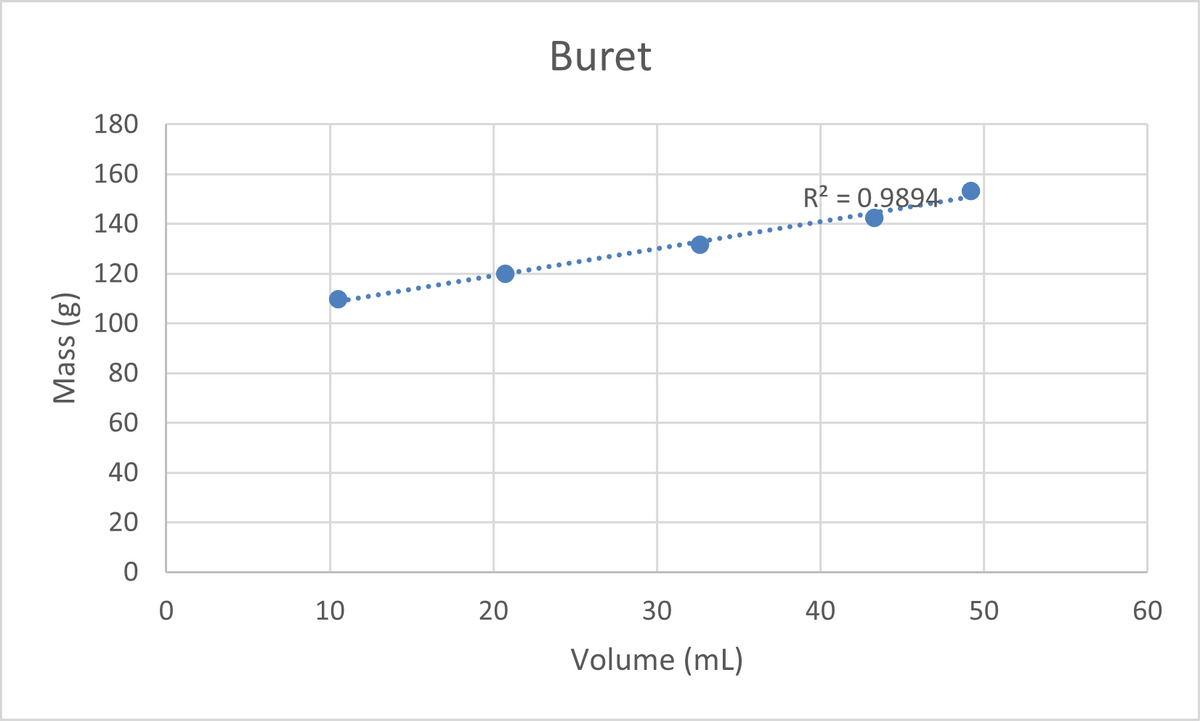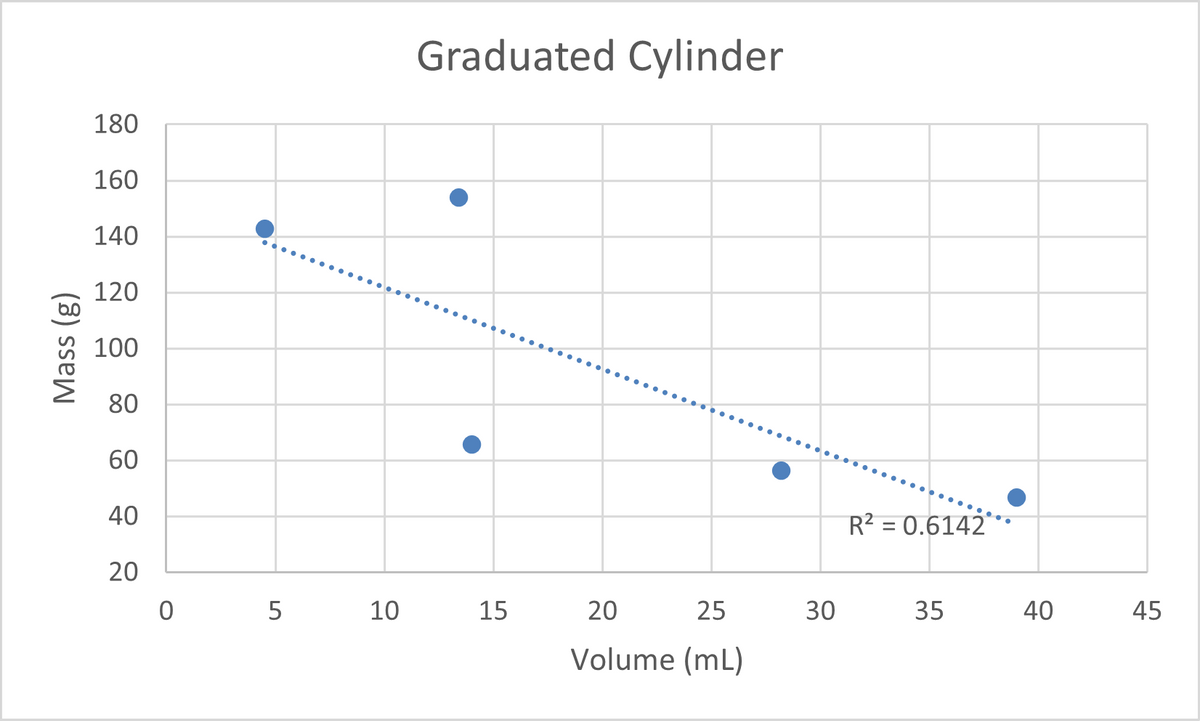Using the data from the Trials with Graduated Cylinder (Trial 1) divide the mass recorded by the volume of H2O. Show the work and be sure to use units and the appropriate significant figures. What is the answer? Explain why this is not the density of water! 109.82g/10.49mL = 10.47 g/mL From the equation: m = DV the intercept value appears to be zero, which makes sense because if there is no volume, the mass of the liquid will be zero. Look at graph 2 (Buret) and determine the "y intercept" both visually and mathematically. Use proper units for both values listed. Visual intercept Not possible (if possible; if not possible put Not Possible on line)
Using the data from the Trials with Graduated Cylinder (Trial 1) divide the mass recorded by the volume of H2O. Show the work and be sure to use units and the appropriate significant figures. What is the answer? Explain why this is not the density of water! 109.82g/10.49mL = 10.47 g/mL From the equation: m = DV the intercept value appears to be zero, which makes sense because if there is no volume, the mass of the liquid will be zero. Look at graph 2 (Buret) and determine the "y intercept" both visually and mathematically. Use proper units for both values listed. Visual intercept Not possible (if possible; if not possible put Not Possible on line)
Introductory Chemistry: A Foundation
9th Edition
ISBN:9781337399425
Author:Steven S. Zumdahl, Donald J. DeCoste
Publisher:Steven S. Zumdahl, Donald J. DeCoste
Chapter2: Measurements And Calculations
Section: Chapter Questions
Problem 146AP: Given that one metric ton = 1000 kg, how many metric tons are inlb?
Related questions
Question
- Using the data from the Trials with Graduated Cylinder (Trial 1) divide the mass recorded by the volume of H2O. Show the work and be sure to use units and the appropriate significant figures. What is the answer? Explain why this is not the density of water!
109.82g/10.49mL = 10.47 g/mL
- From the equation: m = DV the intercept value appears to be zero, which makes sense because if there is no volume, the mass of the liquid will be zero. Look at graph 2 (Buret) and determine the "y intercept" both visually and mathematically. Use proper units for both values listed.
|
Visual intercept |
Not possible |
(if possible; if not possible put Not Possible on line) |
|
Mathematical intercept: (from the equation of the line) |
|
(You can consult the lab manual for information about the intercept or check with the instructor)
Why is this value not zero and what does this value represent in the real, physical world?

Transcribed Image Text:Buret
180
160
R? = 0.9894...
%3D
140
120
100
80
60
40
20
10
30
40
50
60
Volume (mL)
Mass (g)
20

Transcribed Image Text:Graduated Cylinder
180
160
140
120
100
80
60
40
R? = 0.6142
20
5
10
15
20
25
30
35
40
45
Volume (mL)
Mass (g)
Expert Solution
This question has been solved!
Explore an expertly crafted, step-by-step solution for a thorough understanding of key concepts.
This is a popular solution!
Trending now
This is a popular solution!
Step by step
Solved in 2 steps

Knowledge Booster
Learn more about
Need a deep-dive on the concept behind this application? Look no further. Learn more about this topic, chemistry and related others by exploring similar questions and additional content below.Recommended textbooks for you

Introductory Chemistry: A Foundation
Chemistry
ISBN:
9781337399425
Author:
Steven S. Zumdahl, Donald J. DeCoste
Publisher:
Cengage Learning

Introductory Chemistry: An Active Learning Approa…
Chemistry
ISBN:
9781305079250
Author:
Mark S. Cracolice, Ed Peters
Publisher:
Cengage Learning

Introductory Chemistry: A Foundation
Chemistry
ISBN:
9781337399425
Author:
Steven S. Zumdahl, Donald J. DeCoste
Publisher:
Cengage Learning

Introductory Chemistry: An Active Learning Approa…
Chemistry
ISBN:
9781305079250
Author:
Mark S. Cracolice, Ed Peters
Publisher:
Cengage Learning